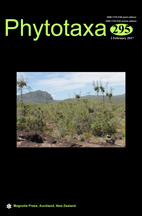Abstract
The genus Vrydagzynea Blume (1858: 59) comprises of c. 35 (Pridgeon & al. 2003: 147, Mabberley 2008: 903) which are distributed in Tropical and Subtropical Asia to West Pacific (Govaerts & al. 2016). Hooker described V. viridiflora (Hooker 1890: 96) based on a single specimen (Fig. 1 A) collected by C.B. Clarke on 18th April 1885 from Namchung, Luckimpore (Lakhimpur), Assam, India. Seidenfaden (1978: 35) studied the holotype of V. viridiflora at K (C.B. Clarke 37939, photo!) and treated V. viridiflora as a synonym of V. albida (Blume 1825: 410) Blume (1859: 62) stating that most of the characters of V. viridiflora seemed to him intermediate between V. albida (with ovate leaves) and V. lancifolia (with lanceolate leaves). He (Seidenfaden 1978: 35) observed that all leaves of V. viridiflora except one, were ovate and therefore, treated it under V. albida. But we had doubts on Seidenfaden’s treatment of V. viridiflora as a synonym under V. albida. Hooker described V. viridiflora with a pubescent rachis, whereas the rachis of V. albida is not as pubescent as V. viridiflora. Further the inflorescence of V. viridiflora is comparatively lax than that of V. albida. However, in order to arrive at a more convincing conclusion some more specimens of V. viridiflora were required for our study, but unfortunately after Clarke’s type collection in 1885, the species had not been collected again.

